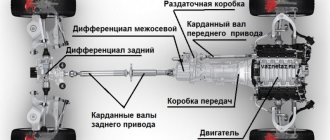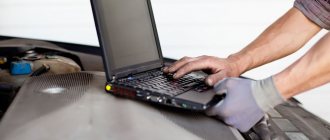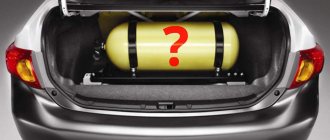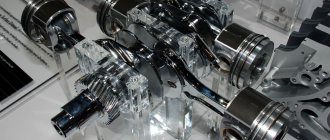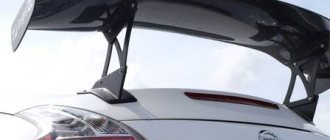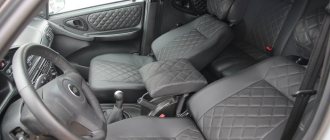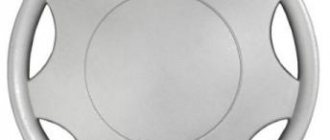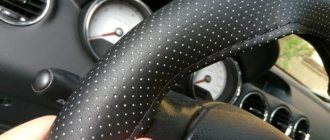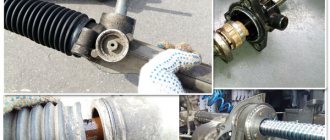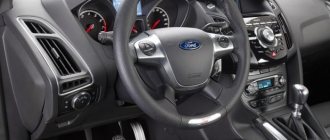Electric power steering (EPS) is a device for reducing the force that the driver must apply to the steering wheel to change the position of the steering wheels. This system is called EPS (from the English Electric Power Steering, electric power steering).
The presence of an amplifier (hydraulic power steering or electric power steering) allows you to:
- increase comfort;
- make driving easier;
- improve overall driving safety.
At the same time, power steering was the only option for a long time, while electric power steering (EPS) appeared on cars relatively recently. Although this solution is a more modern analogue, the EUR has both pros and cons. Read more in our article.
BEZSPONSORAZP › Blog › Steering control of a modern car. Principle of operation
Don’t forget to watch the videos attached to the post, in which you will learn about the different types of steering of modern cars.
Steering is designed to change the direction of movement of the car by turning the front wheels. Nowadays, the steering of a modern car has become complex, because mechanics have been replaced by hydraulics and even electronics. In this article we will look at the operating principle of all modern types of car steering.
Power steering
Most modern cars are equipped with power steering - EUR and power steering. Power steering is designed for comfortable driving, as well as to reduce the force on the steering wheel and hold the car after a sharp maneuver. Today, even in the basic configuration, the car receives power steering.
Until recently, there were two options for steering mechanisms with built-in hydraulic boosters: rack and pinion and “screw-ball nut-sector”. The latter were installed on large cars and SUVs. Today, compact “racks” are increasingly appearing on heavy machines.
principle of operation of a rack and pinion mechanism with hydraulic booster Let us recall the principle of operation of a rack and pinion mechanism with hydraulic booster. In the housing there is a distribution valve with a sensitive element - a torsion bar connected to the steering shaft. The driver turns the steering wheel, the torsion bar, twisting, moves the spool. It slightly opens the holes in the oil channels leading to the power cylinder of the power steering. The latter pushes the rack, reducing the force on the steering wheel. As soon as the driver stops turning the steering wheel, the torsion bar returns to its original position, and the fluid is transferred back to the reservoir.
The performance of the pump, driven by a belt from the crankshaft, must be such that when the engine is idling, the driver can turn the steering wheel without “biting” at a speed of at least 1.5 revolutions per second. Excessive pressure releases the bypass valve.
Steering mechanisms with variable gear ratios help make steering comfortable both when parking and on the highway: in the center of the rack, the teeth are cut with a small pitch, at the ends - with a larger pitch. At small turning angles, the car does not react so sharply to steering inputs, which is very important at high speeds, but when turning, you have to turn the steering wheel less.
Additional comfort and safety were brought by systems that regulate steering force depending on speed. An example is Servotronic steering.
Let's imagine that the driver is turning right. The spool opens the path for fluid to the power cylinder, which helps the rack turn the wheels. At the same time, oil begins to flow through the solenoid valve (it is controlled by an electronic unit that receives information from the speed sensor) into the reverse-action chamber. One of the bypass valves opens, a pressure difference arises, and the piston, lowering, limits the stroke of the spool. The pressure in the power cylinder of the hydraulic booster drops, and the force on the steering wheel, on the contrary, increases. When the driver stops turning the steering wheel, the spool and check valve close.
When turning to the left, another bypass valve opens, and the piston rises, again correcting the movement of the spool, the pressure is released in another part of the power cylinder.
When parking and driving at a snail's pace (up to about 20 km/h), the solenoid valve that limits the flow of fluid into the reverse chamber is closed - the steering wheel can be turned with one finger. As the speed increases, the valve gradually opens and the force on the steering wheel increases.
The device works efficiently and reliably. But the hydraulic pump takes power from the engine, which means it consumes excess fuel and harms the environment. Such a “freeloader” is especially undesirable for low-power motors. The designers found another solution: the pressure of the working fluid is pumped by an electric pump. The control unit receives information from the steering wheel rotation and vehicle speed sensors.
Manufacturers have meticulously calculated that thanks to electro-hydraulic boosters, the car saves about 0.2 l/100 km. It is important that it is easier for engineers to select characteristics and configure the device for a specific model.
